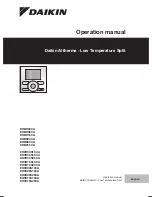
4 Analog I/O Specifications
4.1.3 Analog Input Modules (4 to 20-mA, 4 channels)
4-18
(3) Connecting Current Signal Sources
a) C side of a current signal to “+” terminal of the Module.
b) Connect - side of a current signal to “-” terminal of the Module.
c) Connect the shield of a shielded twisted-pair wire to “Shield” terminal of the Module and short
“Shield” terminal, “S” terminal, and “-” terminal. An incorrect connection will make the input sig-
nal unstable and cause malfunction.
(4) Connecting Voltage Signal Sources
a) C side of a voltage signal to “+” terminal of the Module.
b) Connect - side of a voltage signal to “-” terminal of the Module.
c) Connect the shield of a shielded twisted-pair wire to “Shield” terminal of the Module, and short
the “Shield” terminal to “-” terminal.
d) Leave the “S” terminal open, or the input signal will become unstable and cause malfunction.
(5) Unused Input Circuits
Unused inputs have the “S” terminal shorted to the “+” terminal and to the “-” terminal, as well,
one of these terminals must be shorted to the appropriate “Shield” terminal.
(6) Crimp Terminals
Use M3 terminals for crimping to the terminal block.
(7) Unconnected Terminals
Terminals 17, 18, and 20 are not connected.
5) I/O Allocation
I/O allocation is necessary when using the Analog Input Module (4 to 20-mA, 4
channels). For further details on I/O allocation, refer to
4.3 I/O Allocation
.
















































